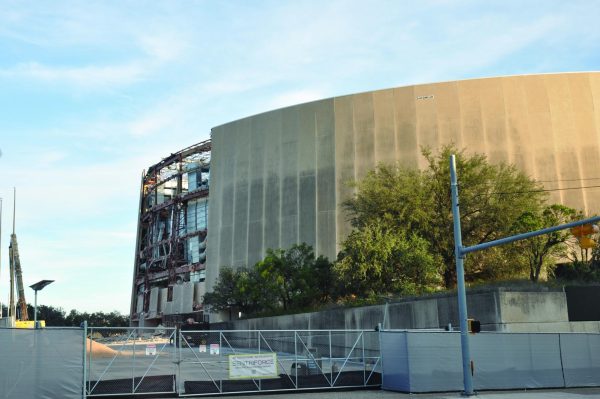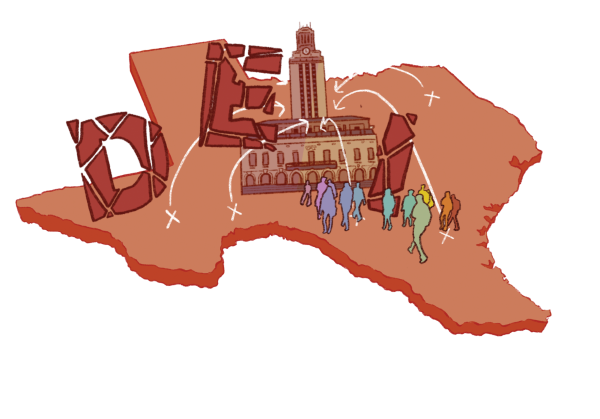Supply Shortage Shortchanges Shoppers: Stores Struggle to Get Supplies Amid COVID Pandemic
December 17, 2021
Since the beginning of the COVID-19 pandemic in early March 2020, the global supply chain has been disrupted, causing the price of shipping to go up and continuing shortages of certain products. Although multiple factors have contributed to the current state of the supply chain, it will continue to follow a distorted pattern, according to the MIT School of Business Management. Even small issues can cause disruptions in the supply chain, like a faulty machine, according to the Harvard Business Review.
Today, many corporate companies are being affected by the supply shortages. Jonathan Rookstool, a manager at Recreational Equipment Inc. (REI) located in Austin, says that for REI, causes of the issue are worker shortages and shortage of raw materials, and that these developments have caused customers to worry about a shift in prices that REI hopes to combat.
“We want to stick to our guns as to what we thought was fair pricing, no price gouging, like you see out there today and a lot of other businesses,” Rookstool said. “We’ve been very good about keeping that standard and not taking advantage of that situation right now.”
Cosmetics company Lush sources many of their products overseas from places including Tunisia, the Dominican Republic, and Hungary, according to local Lush manager Rachel Levy. Levy says that at the head office level, holiday products are being designed earlier, and raw materials and ingredients had to be ordered earlier than they have been in the past.
“We have had to switch up some of our suppliers due to COVID shutdowns,” Levy said. “In some cases, this meant that we had to add additional suppliers. In other cases, we had to entirely replace suppliers.”
Grocery stores across the country have had to raise their prices due to supply shortages, now known as “sticker shock,” and Time Magazine says prices have increased 6.2% in the last year alone. William Pollock, a manager at HEB, shared what they have been doing to try and keep up to product demand.
“[We are] Increasing inventory on items that are available to us by working with vendors who we have built strong relationships with,” Pollock said. “[We also] Occasionally work with new suppliers who have the ability to supply us with similar products that we are struggling to acquire.”
According to CNBC, with the holidays coming up, people should buy their presents early so they won’t run out. Usually companies preorder things in advance to have enough, but that might look different due to the supply changes.
“Our buying cycle for us is 18 months out,” Rookstool said. “We tried to foresee what we could foresee when COVID was rearing its head in 2019. Right now, we’re telling customers if it’s here, buy it now. Because it probably won’t be here as we get closer to Christmas and after that. We’re not a typical Black Friday, big box retailer that suffers the problems like Walmart and Target.”
Lush sometimes has to raise prices when faced with a shortage for a long period of time, but has been steady so far during this shortage, although it has had to work around certain obstacles. For example, this could be Levy’s store not receiving shipments at all, or certain ingredients being difficult to come by.
“The world’s vanilla supply was struggling with crop production a couple years ago and caused vanilla to be rarer and cost more,” Levy said. “We were sold out of certain vanilla-heavy items for a period of time. After we realized that it was going to be a permanent change, we stopped carrying lower-selling vanilla items and raised prices on popular vanilla products that we knew customers would be sad to lose. We’ve even lowered prices before when crops become more abundant.”
Levy said they are having a little trouble training new staff without the new products that are meant to be sold. Not having certain products in-store for members to learn about for extended periods of time caused new hires to lose familiarity with them, according to Levy.
“We had two to three weeks in May 2021 where we were not receiving any shipments,” Levy said. “We had raw materials stuck on boats in the Atlantic Ocean that weren’t making it to us. During that time, we continued to schedule existing staff, and even hired a couple of new staff members, but it made training difficult when we didn’t have products in the store for new staff to learn about.”
Pollock said that HEB is no exception and that they have also been affected by the supply chain issues. Pollock also said that the vast majority of these problems have been due to a multitude of reasons, like labor shortages in production, packaging material shortages, and transportation struggles, although he believes that the cooperation is in a better position than other companies he is familiar with.
“I do believe, due to our focus on treating on employees as well as we do, I feel we are in a better labor position than many other retailers,” Pollock said.









